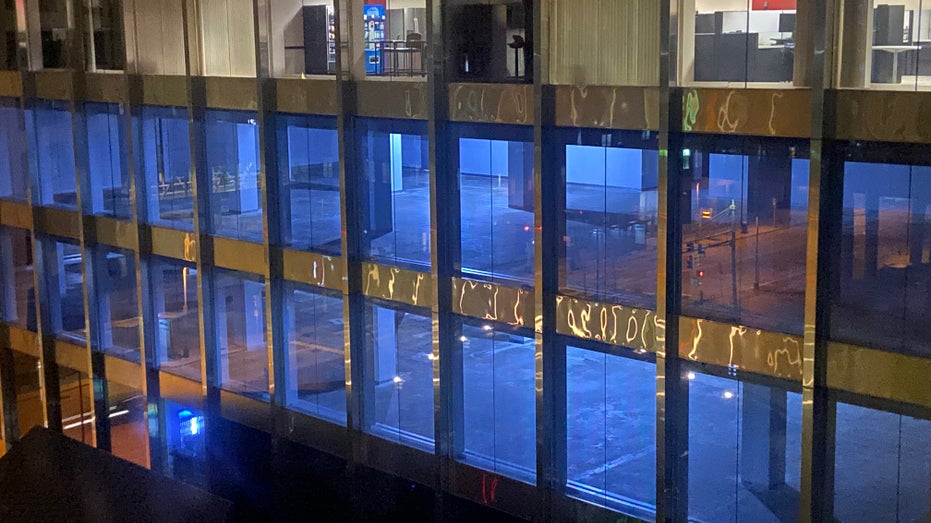Commercial real estate industry on edge as downtown empty office space goes unused
Morgan Stanley analysts forecast commercial property prices could fall as much as 40%
Commercial real estate industry on edge as downtown empty office space goes unused
Some financial analyst worry that the commercial real estate industry is in danger due to the increase of vacant office space with the rise of remote work.
MINNEAPOLIS – Some Morgan Stanley financial analysts say the commercial real estate industry could be headed for a crisis worse than the 2008 great recession. This comes after businesses have left downtowns across the country with an increase in remote work and higher interest rates.
Many downtown buildings are owned by investment firms who rely on bank loans. But with businesses not renting as much office space and rising interest rates, some worry these firms may not have the money to pay back the banks.
In downtown Minneapolis, people are returning to see the Minnesota Twins play ball, attend a concert or catch a Broadway show.
"As we sit here today, we're really beginning to move in a positive direction," Steve Cramer, president and CEO of the Minneapolis Downtown Council and Downtown Improvement District, said. "Like all downtowns, that pandemic hit like a ton of bricks and things really shut down. Then we of course, had the murder of George Floyd here in our city and that caused civil unrest here, and had implications around the country, around the globe. And so we've really been kind of working our way back from that set of events in 2020."
INVESTORS RETREAT FROM COMMERCIAL REAL ESTATE BONDS

Employees working in downtown Minneapolis use the skywalk to avoid the chilly weather. The Minneapolis Downtown Council says about 65% of people are coming into the office at least once a week, up from 50% in 2022. (Mills Hayes/Fox News / Fox News)
Cramer worries about the office buildings that are 30 to 40 years old.
"We have to focus some attention on what can a new life for those buildings be? Maybe they can be converted into residential units," Cramer said. "The newer buildings with amenities, I think are going to do just fine in attracting the office demand."
Last week AT & T announced it was leaving downtown Minneapolis for the suburbs.
"The move will be complete by the end of August, allowing us to use our office space more effectively. It’s important to note that these jobs will remain in the greater Minneapolis area, and we remain committed to Minnesota," Clay Owens, director of public relations for AT&T, said.
Andy Babula is the Director of the Real Estate Program and the Shenehon Center for Real Estate at the University of St. Thomas.
"People are working from home a lot more now. If they do want to go into the office, they're going to want somewhere nearby," Babula said about the decision to move to the suburbs where many employees tend to live.

CBRE Global Commercial Real Estate Services says office vacancy rose during the 2008 financial crisis, but it was led by a recession. This rise is vacant office space is driven by a structural shift from the pandemic to remote work. (Fox News / Fox News)
According to CBRE Global Commercial Real Estate Services, in New York City there has been a 7.6% increase in empty office space since the pandemic. In Seattle, an 8.2% increase and in San Francisco, a whopping 25.4% increase.
COMMERCIAL PROPERTY DEBT CREATES MORE BANK WORRIES
CBRE says that San Francisco has a large amount of tech tenants, and they have viewed returning to work in person differently. Many employees are asked to come back to work on a more voluntary basis, which explains why they saw such a sharp increase in empty office space in comparison to other cities.

People who live in downtown Minneapolis say empty office space surrounds them. (Mills Hayes/Fox News / Fox News)
In Minneapolis, there’s only been a 2.1% increase in empty space, but some worry the problem could get worse.
"If the pandemic started three years ago, people may still have a few years left on their lease. So, over the next couple of years, we are going to be seeing these leases expire and companies as they expire will likely either vacate or downsize," Babula said.
Babula also said there is concern that the value of the buildings will decrease and impact the tax base.
US REAL ESTATE HAS ‘MONUMENTAL OPPORTUNITY’ TO SOLVE HOUSING CRISIS IN 2023: EXPERT
"The city like Minneapolis is going to collect less taxes from every building downtown if its value is lower by 20 to 30%. That's less taxes in their pocket, and that has to then get shifted to others in the city, to the residents and other businesses throughout the city. So that's a concern as well," Babula said.
With less demand for office space, investment firms who own these downtown buildings may not have enough money to pay off their loans to the banks.

In quarter one of 2020, Seattle had 9.4% of empty office space in downtown. By 2023, that number has grown to 17.6 % of empty office space. (Fox News / Fox News)
"Do we believe that we're going to see defaults? Absolutely. Are we keeping a close eye on the banks that hold a lot of these loans? Absolutely, but generally we believe that we are going to be able to come through the other end of this with some scratches and bruises, but nothing that is going to drive the collapse of the banking system," Julie Whelan, head of global head of occupier thought leadership at CBRE, said.
GET FOX BUSINESS ON THE GO BY CLICKING HERE
Whelan said downtowns are not dying by any means, they're just going through an evolution right now. Many are shifting towards a footprint of more residential, retail and entertainment to make up for the office crowds leaving.
"If the different sides of the private sector and the public sector can come together and create an impetus drive to change in our cities that we’ll actually come out feeling stronger when we look ahead 10 years from now," Whelan said.





















